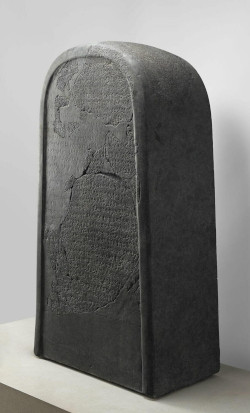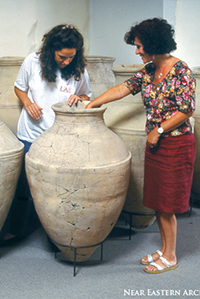
Not a Friend of ASOR yet? Sign up here to receive ANE Today in your inbox weekly!

April 2023
Vol. 11, No. 4
The Myth of the Twelve Tribes of Israel
By Andrew Tobolowsky
The twelve tribes of Israel are, in a nutshell, how the Hebrew Bible’s historical narratives define Israel. Even today, the tribes are the ultimate through-line, the enduring symbol, what I have called elsewhere “the permanent, impermeable vision of who Israel is, and always will be.” The centrality of the twelve tribes tradition to the vision of Israel is indisputable. But did the twelve tribes actually exist? Well, it’s complicated.

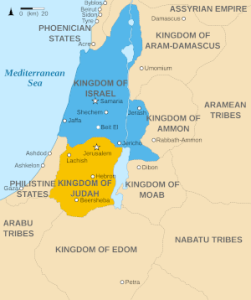
Map of the Kingdoms of Israel and Judah and surrounding states in the 9th century BCE. (Wikimedia Commons)
The twelve tribes are supposed to be descended from the twelve sons born to Jacob, Rachel, Leah, Bilhah, and Zilpah, as described in Genesis 29-30 and Genesis 35, who travel down to Egypt with him and become a great nation. This is much more than merely a matter of familial connection. In Numbers — during the exodus, when Israel had grown into a great nation — the people of Israel are repeatedly depicted as organized according to tribe, both in the Israelite camp and in their order of march (Num 1, 2, 7, 10, 13, 26, 34). In Joshua, when the promised land is conquered, it is divided between the tribes into tribal patrimonies (Joshua 13:15-19:48). It is “all the tribes of Israel” that come together to make David king (2 Sam 5:1), and when his and Solomon’s United Monarchy splits in two, it is done so along tribal lines — most often ten for Israel, two for Judah (1 Kings 11:31-35, 12:21, 23).
When Israel — and not Judah — is conquered by the Assyrians, all of its tribes are supposedly taken into an exile from which they never return, which is the starting point for the famous “lost tribes of Israel” tradition. In fact, in this text we are told that “none remained but the tribe of Judah alone” (2 Kings 17:18). But still, many years later, when Judah itself had been conquered and exiled and returned in the familiar ways, the dedication of the Second Temple is supposed to be accompanied by a great sacrifice including “twelve male goats according to the number of the tribes of Israel” (Ezra 6:17).
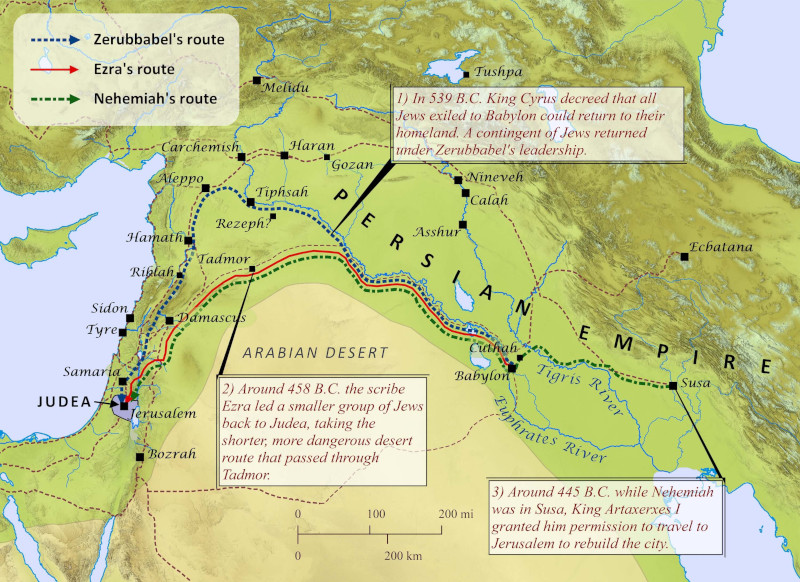
Outside of the Hebrew Bible, there may be one reference to a tribe of Israel: the Mesha stele, from the mid-ninth century BCE, may perhaps refer to the tribe of Gad. On the other hand, we have any number of names recorded in the epigraphic record over the course of the first millennium BCE, particularly from later centuries, and no one ever seems to describe themselves as a member of a tribe. The best evidence that early Israel was organized into tribes is probably Judges 5, which many scholars think is the oldest text in the entire Hebrew Bible, and which describes a battle between the tribes and (probably) Jabin, king of Canaan – the story is told in Judges 4, but only the general Sisera is mentioned in Judges 5 itself. But as evidence, it is more difficult to interpret than many scholars acknowledge. It does not include Judah, Levi, Simeon, or Gad, and it does mention other groups that are not typically reckoned among full tribes of Israel, such as Machir, Gilead, and Meroz, without giving any indication that they are to be understood differently from the familiar tribes that are mentioned. And anyway, we don’t really know how it’s been edited over time.
Meanwhile, the Pentateuch and the book of Joshua are generally meticulous in describing tribal details down to the inch. But even later books telling the same story are at best vague on the topic of tribal arrangements and many other books show no interest in the topic at all. The prophetic books are especially noticeable here, since they so often give us additional historical context, even incidentally, for biblical episodes that would otherwise appear in only one account. But few prophets show even an awareness of the importance of tribal identity. It can be hard to tell sometimes – Ephraim, Judah, and Dan are all used as geographical place names too, and the Levites appear fairly often throughout. But the basic facts are that there is a full list of tribes in Ezekiel 48, which is often thought of as a Persian period edition to the text; Zebulun, Naphtali, Ephraim, Manasseh, and Judah are mentioned in Isaiah 9; and most of the tribes are never otherwise mentioned in these books at all.
So where does that leave us? Well, in my view, with two conclusions. First, it is pretty likely that early Israel was organized into tribes in some way. Judges 5 is presumably proof of that much at least. How much it resembled the familiar twelve tribe vision, however, is a much more difficult question to answer. In particular, in recent years, a number of scholars have begun to wonder whether early Judahites even thought of themselves as Israelites at all — for a wide variety of reasons — and a straightforward reading of Judges 5 would actually add fuel to that fire. It doesn’t include any of the tribes most consistently associated with Judah rather than Israel, including Judah itself — and Simeon and Levi. So, it’s possible there was an early tribal system, but only in Israel, while Judah had something different going on. Perhaps, in Judah, there was an indigenous, but now largely buried system that includes various groups mentioned here or there in the traditions concerning David but not in a consistent way — the Calebites, the Jerahmeelites and so on.
The second and more important conclusion, however, is this. Whatever the actual history of the twelve tribes of Israel, that history does not explain the role the twelve tribes tradition plays in the biblical narrative. Instead, it was clearly the interest of exilic and post-exilic authors in the tribal system that gave it that role. For one thing, the vast majority of texts that describe the tribes are widely acknowledged to be from this period, and their sheer quantity testifies to the strength of that interest. For another, there is that tension between how completely and meticulously tribal arrangements are described in the books that correspond to Israel’s heroic age (Genesis through Joshua) and how vaguely the more plausibly historical texts in the books of Kings deal with the subject suggest that we are dealing here with an idealized vision of Israelite identity. There are, for example, fifteen different tribal lists in the Pentateuch, but not even one complete description of which tribes were part of which kingdom when. Likely, the idealized twelve tribe paradigm was retrojected onto the period of mythic origins because it could be, while more recent eras of the Israelite and Judahite experience more stubbornly resisted the centering of a concept that, at the very least, does not seem to have been consistently important. And in this, the twelve tribes tradition is not unlike any other tradition.
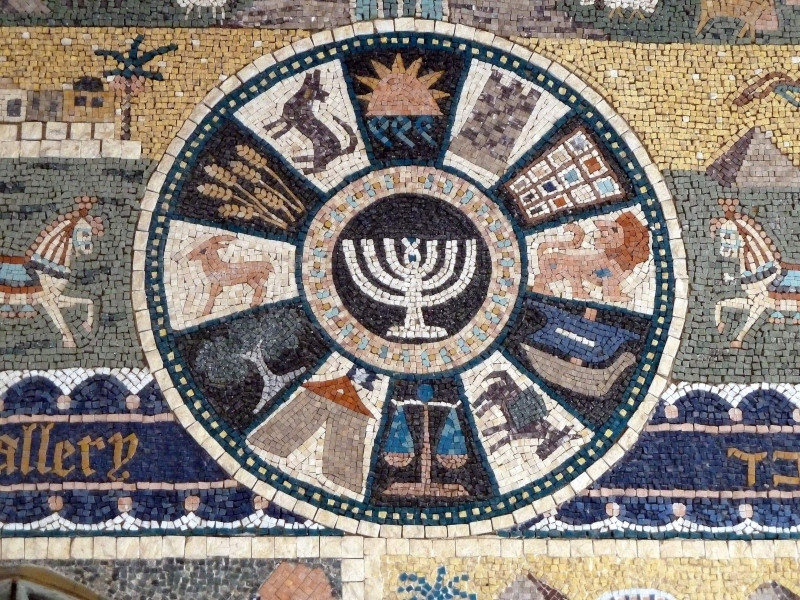
In other words, the idea that any kind of tradition simply distills the memory of a nation, and keeps it stable for centuries belongs (or ought to belong) to another era of scholarship. Today, we must acknowledge that whatever survives, survives because those who wrote it found meaning in it, and that that meaning shaped how the story was told. More broadly, in any generation, visions of identity are always being reshaped by time and circumstance, and traditions of identity reshaped to match. Thus, the twelve tribes tradition may well have roots in more ancient realities, though how different these were from the paradigm remains an open question. As we have it, however, the tradition is primarily a reflection of how the authors of these texts saw themselves and their world.
Andrew Tobolowsky is Associate Professor in the Department of Religious Studies at William & Mary. His book, The Myth of the Twelve Tribes of Israel: New Identities Across Time and Space, was recently published by Cambridge University Press.
Want To Learn More?
The Relationship Between “Jews” and “Israelites” After the Babylonian Exile
By Jason Staples
The terms “Israelite,” “Jew,” and “Hebrew” are frequently regarded as interchangeable. But a variety of sources make it clear that while Jews are Israelites, not all Israelites are Jews. Read More
The Ceremonial Precinct in the Upper City of Hazor: What Does the Identification As a Temple or Palace Have to Do With Joshua’s Conquest?
By Amnon Ben-Tor
Hazor, “the head of all those kingdoms,” has a unique place in Biblical Archaeology. It is the largest tell in the Southern Levant, and a city-state whose importance resonated throughout the Middle and Late Bronze Ages. Hazor is also specifically named in the Book of Joshua as one of the enemies of the Israelites. Since the pioneering excavations at Hazor during the 1950s and 1960s, the question of ‘who destroyed Hazor’ has tantalized scholars and lay people. The renewed excavations directed by Ben-Tor have added greatly to our understanding of the site and have brought to light an enormous Late Bronze Age “Ceremonial Palace” in the Upper City…Read More
